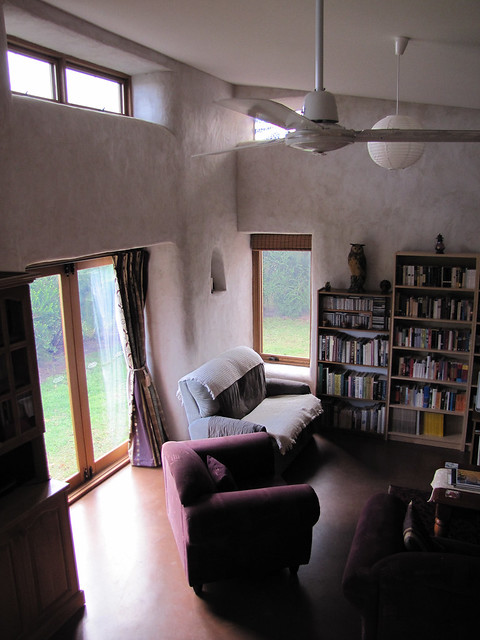In newsagencies this month I have articles in Grass Roots No.255 (Roadside Rehabilitation) and in The Owner Builder No.215 (Embodied Energy Revisited and Coloured Glass Designs).
Roadside Rehabilitation takes a look at the work we’ve done at Red Moon Sanctuary to protect and bring back the native flora in the roadside reserves adjacent to our farm. Control of the African runner grass kikuyu, a pasture mainstay in Australian agriculture, is essential so it doesn’t choke the native vegetation – this grass will invade roadside reserves across the fenceline – as will other pasture species. It is our moral responsibility to get rid of these invaders in the roadside remnant vegetation, as they cause decline and extinction of the native flora (and associated native birds, insects, reptiles, mammals etc) left in the roadsides.
It’s standard practice in Australian rehabiliation ecology to use spot glyphosate applications to provide effective control of this problem – the least problematic herbicide on the market, in the least problematic way – for various good reasons which I explain in the article. Essentially, it’s analogous to using antibiotics where severe infections make that the best option – while at any other time, you’d avoid unnecessary use of antibiotics (and antibiotics are actually far more problematic for the body than glyphosate is for an ecosystem). Annual strip knockdown of pasture grasses on the fencelines bordering native vegetation is necessary to reduce re-invasion.
Active management of the situation is required – if you do nothing, you’re aiding and abetting species extinction, while perhaps congratulating yourself on avoiding the use of “chemicals.” More education is required on this subject, and I intend to write follow-up articles debunking some common misperceptions around this topic. By the way, we run a largely organic farm, but make exceptions for the sparing use of antibiotics, glyphosate etc where they are the best option to prevent bad outcomes for individuals or species.
Embodied Energy Revisited looks at embodied versus operational energy – the amount of energy required to build a house, versus the amount required to subsequently run it – and explains how some initial investment in high-energy materials, like concrete flooring for thermal mass, can be repaid many times over down the track in energy savings for home heating and cooling if the house is designed correctly for its climate and in accordance with passive solar principles that maximise natural winter heating and natural summer cooling. It’s always best to build well, and building small helps to reduce impact on budget and environment alike.
Coloured Glass Designs looks at an alternative to stained glass which is fun and inexpensive, and can produce beautiful results.






